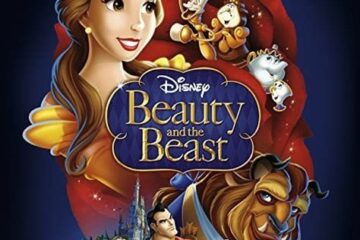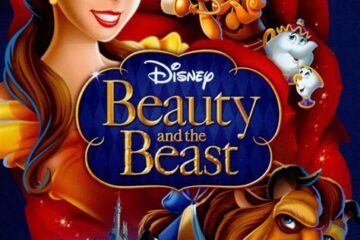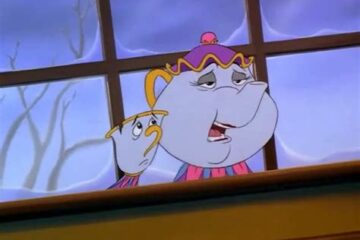Behind the Scenes of the Animation Process in Beauty and the Beast Cartoon

Behind the Scenes of the Animation Process in Beauty and the Beast Cartoon
Welcome to the fascinating world of animation! From crafting captivating visual narratives to bringing animated characters to life, the process behind creating animated films is a true art form. In this blog post, we will explore the key elements that contribute to the magic of animation. Join us as we delve into the intricate process of storyboarding, character design, background art, animation techniques, and sound design. Prepare to be inspired as we uncover the secrets behind breathing life into inanimate objects and enhancing emotion and atmosphere through the power of animation.
Storyboarding: Crafting the Visual Narrative
When it comes to creating a visually compelling story, storyboarding is a crucial step in the process. By breaking down a script or concept into a series of panels, a storyboard artist can effectively communicate the intended narrative and visual elements to the rest of the production team. This powerful tool allows filmmakers, animators, and designers to plan, visualize, and refine their ideas before they are brought to life on screen. In this blog post, we will delve into the art of storyboarding and explore its importance in crafting a captivating visual narrative.
The Storytelling Power of Storyboards
A well-executed storyboard can transform a simple idea into a captivating story. It serves as a visual guide, allowing the creators to map out the sequence of events, camera angles, and character actions. By depicting key moments and emotion-driven scenes, storyboards help to establish the pacing, tone, and overall rhythm of the narrative. The use of strong composition, color choices, and visual metaphors in a storyboard can enhance the storytelling experience and evoke specific emotions in the audience.
Collaboration and Communication
One of the biggest advantages of storyboarding is its ability to facilitate collaboration and effective communication between different members of a production team. A storyboard serves as a common visual language that allows directors, cinematographers, animators, and other key stakeholders to share and discuss their ideas. It helps in aligning everyone’s vision and ensures that the entire team is on the same page regarding the story, camera shots, and overall visual style. With a clear understanding of the intended visual narrative, the team can work together seamlessly to bring the story to life.
Benefits of Storyboarding
Storyboarding offers numerous benefits that contribute to the overall success of a project. It allows for better planning, as it helps to identify any potential flaws or inconsistencies in the narrative flow. By visualizing the story in advance, filmmakers can make necessary adjustments and refinements before production begins. Furthermore, storyboards act as a reference during the actual production, ensuring that the artistic direction remains consistent throughout. Additionally, a well-crafted storyboard can also be presented to investors, clients, or potential collaborators as a visual representation of the idea, making it easier to convey the intended narrative and secure support or funding.
By now, it’s clear that storyboarding is a vital step in the filmmaking and animation process. It helps to craft a strong visual narrative, fosters collaboration, and provides a roadmap for the entire creative team. Incorporating storytelling techniques and elements of dramatic composition, color psychology, and emotive cues into storyboards can enhance the overall impact of the final product. So, whether you’re an aspiring filmmaker, animator, or designer, mastering the art of storyboarding is a skill that can elevate your storytelling abilities to new heights.
Character Design: Bringing Animated Characters to Life
Character design is a crucial aspect of creating animated films and series. It involves the process of visualizing and developing the unique personalities and appearances of the characters that will be brought to life on screen. It is through character design that animators are able to captivate audiences and evoke emotions. In this blog post, we will explore the art of character design and how it plays a fundamental role in the world of animation.
The Importance of Character Design
Character design goes beyond simply drawing or creating a character’s physical features. It delves into understanding the character’s motivations, traits, and backstory to effectively bring them to life. When done well, character design can make viewers empathize with and root for animated characters as if they were real. It helps establish a connection between the audience and the story being told, allowing viewers to emotionally invest in the characters’ journey.
The Process of Character Design
The process of character design involves several stages, starting with brainstorming and conceptualization. Animators work closely with writers and directors to understand the unique characteristics of each character. They consider the story’s setting, time period, and overall theme to ensure the design aligns with the narrative. Research is conducted to gather visual references and inspiration, enabling the animators to create a visually appealing and believable character.
Bringing the Characters to Life
Once the initial sketches and concept art are approved, the character design moves into the next phase – rigging. Rigging involves creating a digital skeleton and controls for the character, allowing animators to manipulate and animate them. This process gives the characters a sense of movement, bringing them to life on screen. Animators pay attention to every detail, from the way characters walk and talk to their facial expressions and gestures. These subtle nuances contribute to the believability and relatability of the characters.
Conclusion
Character design is a vital component of the animation process. It is an art form that combines creativity, storytelling, and technical skills to breathe life into animated characters. From their physical appearance to their personalities, every aspect of a character is carefully crafted to captivate and engage audiences. So next time you watch your favorite animated film or series, take a moment to appreciate the artistry and thought that went into bringing those characters to life.
Background Art: Creating Enchanting Worlds
When it comes to creating enchanting worlds in animation, background art plays a crucial role. It sets the stage, immerses the viewer in the story, and creates a captivating atmosphere. Whether it’s a lush forest, a bustling cityscape, or a mystical castle, the background art adds depth and visual appeal to the animated world.
One of the key aspects of background art is its ability to convey the mood and tone of the scene. The color palettes, lighting, and textures used in the background can instantly evoke emotions and enhance the storytelling. For example, a bright and vibrant color scheme might be used to portray a cheerful and lively setting, while a dark and muted palette might be employed to create a sense of mystery or danger. The background art dictates the visual language of the animation and ensures that the audience is fully engaged in the story.
List of elements in creating enchanting worlds:
- Concept development: Before diving into the actual creation of the background art, a clear concept must be developed. This involves brainstorming ideas, sketching rough layouts, and gathering visual references to establish the look and feel of the animated world.
- Composition and perspective: The composition of a background is essential in guiding the viewer’s attention and creating a balanced visual. Artists use various techniques, such as the rule of thirds or leading lines, to draw the eye to the focal point. Additionally, understanding perspective is crucial to create a believable three-dimensional space within the animation.
- Detail and texture: Adding intricate details and textures to the background helps bring it to life. Whether it’s the texture of tree bark, the crumbling stone walls of a castle, or the intricate patterns on fabrics, these small details enrich the visual experience and make the animated world feel more realistic.
- Color and lighting: The choice of colors and lighting greatly impact the overall mood and atmosphere of the background. Warm colors can create a cozy and inviting ambiance, while cool tones can evoke a sense of calm or melancholy. By strategically placing lights and shadows, artists can also add depth and dimension to the scene.
Table comparing different background art styles:
| Style | Description | Examples |
|---|---|---|
| Realistic | Depicts backgrounds in a highly detailed and accurate manner, often resembling real-life scenes. | Frozen, The Lion King |
| Stylized | Uses exaggerated proportions, bold colors, and unique shapes to create a distinct and imaginative world. | Moana, Tangled |
| Minimalistic | Focuses on simplicity and minimal details, often using clean lines and solid colors. | My Neighbor Totoro, Ponyo |
| Fantasy | Creates fantastical and otherworldly backgrounds, often incorporating magical elements and surreal landscapes. | Spirited Away, Howl’s Moving Castle |
By carefully crafting background art, animators are able to transport audiences into enchanting worlds. The attention to detail, composition, color, and style all contribute to creating a visually stunning and immersive experience. So, the next time you watch your favorite animated film or series, take a moment to appreciate the intricate and captivating background art that brings these enchanting worlds to life.
Animation Techniques: Breathing Life into Inanimate Objects
Animation is a fascinating art form that allows us to bring inanimate objects to life. Whether it’s a bouncing ball, a dancing spoon, or a talking lamp, animators have the power to give these objects personality, emotion, and movement. In this blog post, we will explore some of the animation techniques used to breathe life into inanimate objects and create engaging and captivating animations.
1. Squash and Stretch: One of the fundamental principles of animation is squash and stretch. This technique involves exaggerating the shape and form of an object to create a sense of weight and flexibility. By compressing and elongating an object, animators can convey its movement and make it more dynamic and lively.
2. Timing and Spacing: The way an object moves can be just as important as the movement itself. Timing and spacing are crucial in animation as they determine the rhythm and flow of a scene. By carefully adjusting the timing of an object’s movements and the spacing between each movement, animators can create a sense of realism and believability.
3. Anticipation and Follow Through: Anticipation and follow-through are techniques that add a sense of weight and believability to an object’s movements. Anticipation involves preparing the audience for an action by creating a subtle movement or pose before the main action occurs. Follow-through, on the other hand, involves the continuation of an object’s movement even after the main action has stopped. These techniques add realism and make the animation more visually appealing.
By using these animation techniques, animators can transform simple inanimate objects into captivating characters that can evoke emotions, tell stories, and entertain audiences. It’s through the manipulation of timing, spacing, and movement that these objects come to life on the screen. So next time you watch an animated film or short, pay close attention to the inanimate objects and see how they have been brought to life through the art of animation.
Sound Design: Enhancing Emotion and Atmosphere
Sound design in film and animation plays a crucial role in creating a captivating and immersive experience for the audience. It goes beyond just adding background music or simple sound effects. A well-executed sound design can enhance the emotions portrayed by the characters and set the tone and atmosphere of a scene.
One of the key aspects of sound design is the use of soundscapes. Soundscapes refer to the combination of various sounds, including music, dialogue, and ambient sounds, to create a specific audio environment. By carefully selecting and layering different elements, sound designers can transport the viewers to different places and convey the desired emotions.
Another important technique used in sound design is foley. Foley artists recreate or create sounds that are synchronized with the actions on the screen. Whether it’s footsteps, doors opening, or the rustling of leaves, these sounds help to make the animated world feel more realistic and believable. Foley adds depth and detail to the visuals, allowing the audience to fully immerse themselves in the story.
Additionally, sound effects are utilized to add impact and emphasize key moments in a film or animation. These can range from explosions and thunderstorms to the subtle sounds of a character’s breathing or the ticking of a clock. Sound effects help to create a sense of anticipation, suspense, or excitement, depending on the desired effect.
A crucial part of sound design is musical composition. The right soundtrack can evoke powerful emotions and enhance the storytelling in a film or animation. Whether it’s a soaring orchestral score or a minimalistic piano piece, the music sets the mood and reinforces the narrative. It can convey joy, sadness, tension, or any other emotional state, amplifying the impact of the visuals on the audience.
In conclusion, sound design is an essential element of film and animation production. Through the use of soundscapes, foley, sound effects, and musical composition, sound designers have the power to enhance the emotion and atmosphere of a scene. They create an immersive audio experience that complements the visuals, making the audience feel more connected to the characters and the story being told. So next time you watch a film or an animated feature, pay attention to the intricate sound design that brings it all to life.
Frequently Asked Questions
The Beauty and the Beast Cartoon Soundtrack: A Musical Journey
September 29, 2023Analyzing the Themes and Symbolism in Beauty and the Beast Cartoon
September 28, 2023Top 10 Beauty and the Beast Cartoon Episodes You Need to Watch
September 26, 2023Exploring the Magical World of Beauty and the Beast Cartoon
September 26, 2023The Evolution of Beauty and the Beast Cartoon Characters
September 26, 2023A Deep Dive into the Making of Walt Disney’s Beauty and the Beast
September 26, 2023
Leave a reply Cancel reply
Recommended
-
Beauty And The Beast Lyrics Original
August 18, 2023 -
Top 10 Beauty and the Beast Cartoon Episodes You Need to Watch
September 26, 2023 -
Home From Beauty And The Beast Lyrics
August 17, 2023









